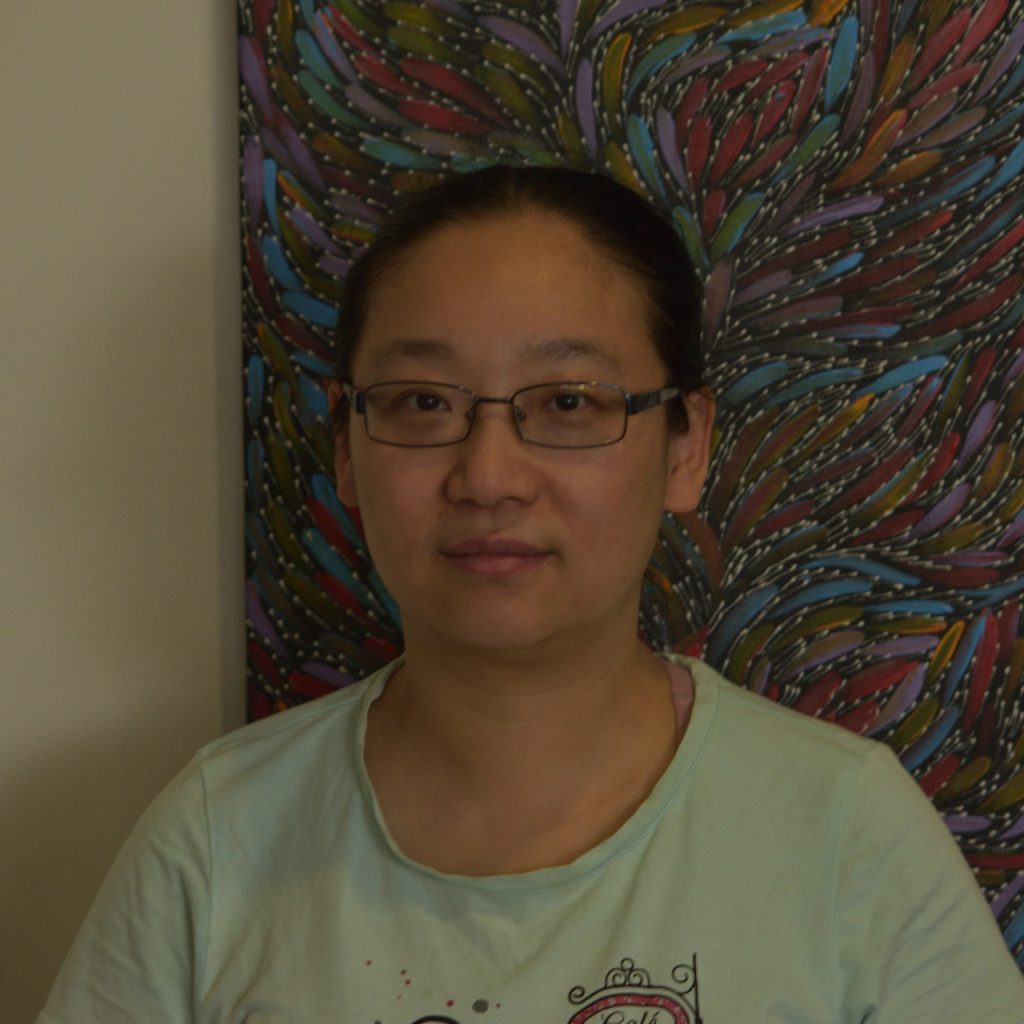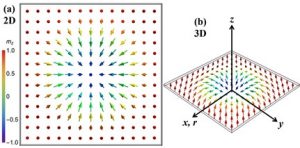Have you ever complained about not enough data storage space for your computer, or your hard drive is too power hungry? A unique swirl texture in a magnetic thin film could very likely be the answer to those problems.
Scientists call it a magnetic “Skyrmion”, which is beautifully shown in (Figure 1). Skyrmions can be used for the next generation if digital data storage devices. This magnetic texture is super stable and can be moved, created and deleted easily using very low current. In summary, future skyrmion devices would have higher data density, be easy to control and greener (extremely low energy cost).
The challenge is how to find the best material for the actual applications, because there are so many different magnetic material properties influencing the size and shape of skyrmions. If there was a simple analytic theory to predict its size and shape easily, the material scientists and engineers would have a much easier time to design their perfect skyrmion devices for different purposes.
As a science nerd, I was so happy to be on board with my supervisor Karen Livesey. We started a mathematical adventure in the magnetic world with a quest – how could we predict the size and width of a skyrmion given the magnetic material properties.
I love math like you may love playing games – you know the rules, but you need to use them in a very cunning way to be a good player. Mathematics is such a beautiful tool for me to tackle and reveal the secret of a very complicated physics system. Skyrmions are really complicated, for example, they have five energy contributions: Exchange energy wants all the magnetic textures line up and unified; stray field energy wants to split the texture into different regions; DMI energy on the interface happily wants to twist the magnetic texture; finally, Zeeman energy can stabilize or destabilize the skyrmions depending on the direction of an applied magnetic field. We can flesh out the relationship of all the material properties on the size and shape of a typical magnetic skyrmion by minimizing its total energy.
It is not like you can just sit down and solve those difficult and complicated integration and differential equation by pen and paper alone. Dealing with the mathematical description of nano scale interactions is not a cake walk. It requires courage and wisdom, which I learnt from my supervisor and the enjoyable process of the research project.
It was really rewarding, when we achieved a simple analytical expression which has not been done the same way in any past papers. As an undergraduate student before this project, I have been constantly told what to do, how to do it, and what is the correct answer. Research is so rewarding because it allows me to be an independent thinker and create something valuable of my own!
Ellen Lu
The University of Newcastle


